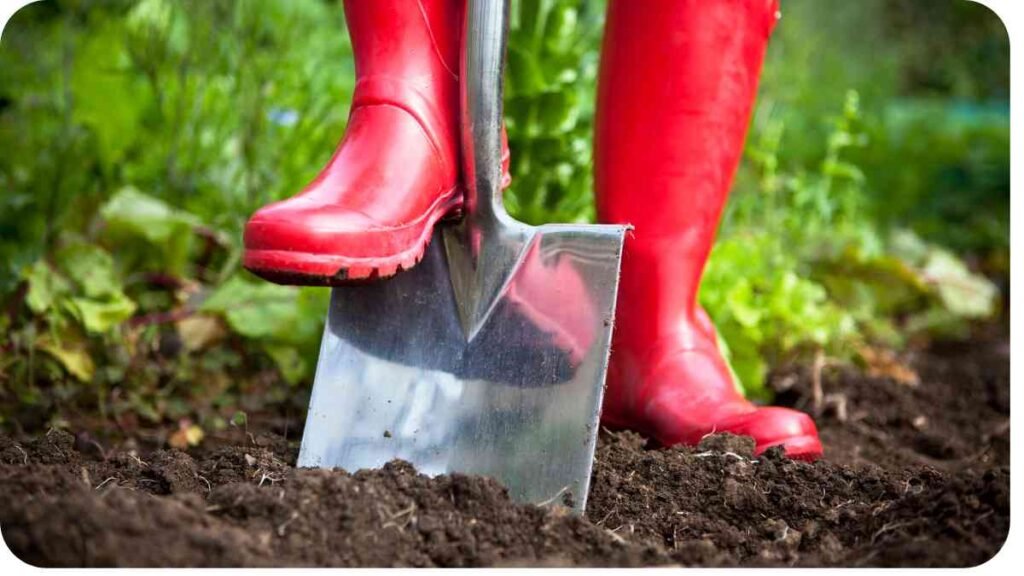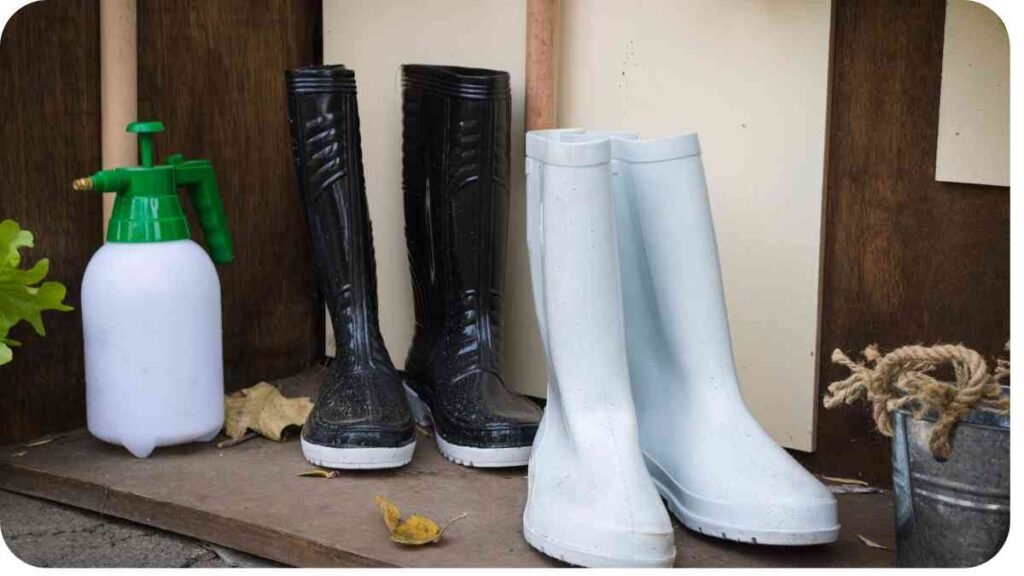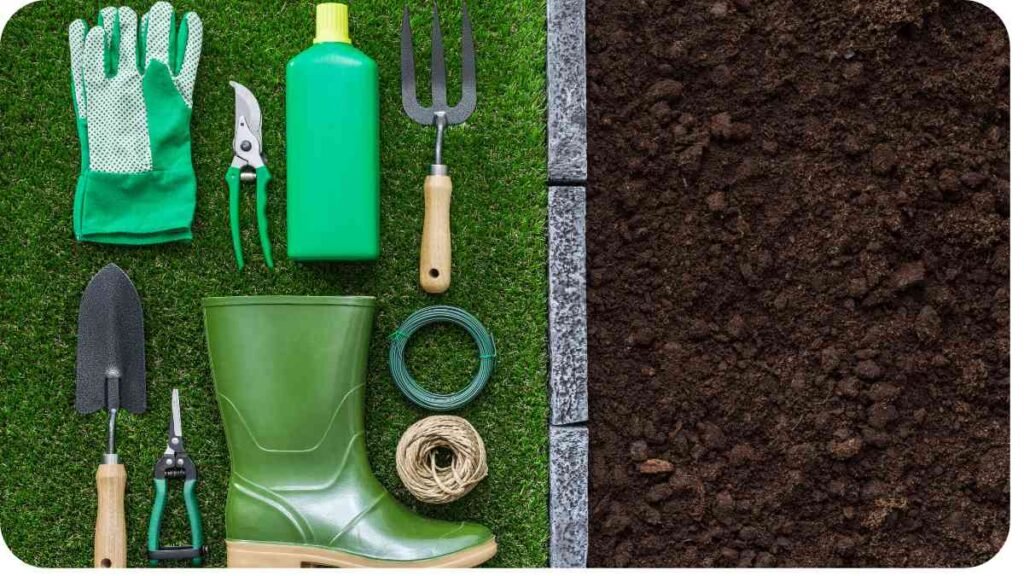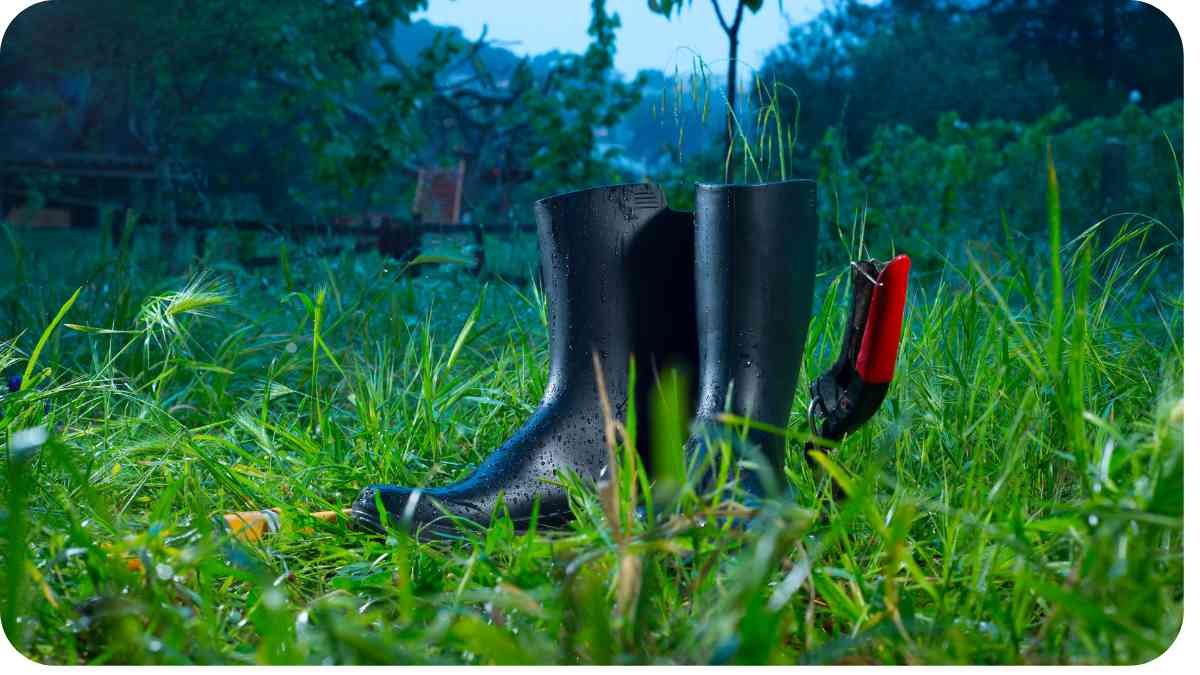Gardening is a delightful activity that connects us with nature, but it can also be messy and demanding on our footwear. Whether you’re tending to a small urban garden or managing a vast landscape, having the right pair of gardening boots is essential.
In this guide, we’ll explore the factors to consider when choosing gardening boots and recommend some top picks to keep your feet comfortable and protected while you tend to your green space.
| Takeaways |
|---|
| Choosing the right gardening boots is crucial for comfort, protection, and performance in the garden. |
| Factors to consider include durability, comfort, waterproofing, and traction. |
| Rubber, leather, and neoprene are popular materials for gardening boots, each with its own advantages. |
| Top picks for gardening boots cater to different needs, from overall performance to budget-friendly options. |
| Proper care and maintenance of gardening boots ensure longevity and continued effectiveness. |
2. Importance of Choosing the Right Gardening Boots

When it comes to gardening, wearing the appropriate footwear is crucial for several reasons. Firstly, gardening involves a lot of bending, kneeling, and walking on uneven terrain, which can put strain on your feet if they’re not properly supported.
When considering gardening in Pittsburgh, knowing the gardening zone is crucial for plant selection and care. Understanding the climate ensures appropriate footwear, enhancing comfort and efficiency for gardeners.
Secondly, you’ll likely encounter mud, water, and various debris while working in the garden, so having waterproof and durable boots is essential to keep your feet dry and protected. Additionally, the right pair of gardening boots can prevent slips and falls, provide traction on slippery surfaces, and protect your feet from sharp objects like thorns and rocks.
3. Factors to Consider When Selecting Gardening Boots
Durability
One of the most important factors to consider when choosing gardening boots is durability. Look for boots made from high-quality materials such as rubber, leather, or neoprene, which can withstand the rigors of gardening and last for many seasons.
Comfort
Comfort is another crucial consideration, especially if you spend long hours in the garden. Opt for boots with cushioned insoles, ample arch support, and roomy toe boxes to prevent discomfort and fatigue.
Waterproofing
Since gardening often involves exposure to water and moisture, waterproofing is essential to keep your feet dry and comfortable. Choose boots with waterproof materials and sealed seams to prevent water from seeping in.
For Frisco, TX residents, understanding the gardening zone aids in planning and executing successful gardening projects. Knowing local conditions helps in choosing the right gardening boots, ensuring comfort and safety
Traction
Gardening can take you across a variety of surfaces, from muddy soil to slippery rocks. Look for boots with non-slip soles and aggressive treads that provide excellent traction on different terrains.
4. Types of Gardening Boots

When it comes to gardening boots, there are several types to choose from, each with its own unique features and benefits.
Rubber Boots
Rubber boots are a popular choice for gardening due to their waterproof properties and durability. They’re easy to clean and provide excellent protection against mud and water.
Leather Boots
Leather boots are known for their durability and classic style. While they may not be as waterproof as rubber boots, they offer superior breathability and can be treated with waterproofing agents for added protection.
Neoprene Boots
Neoprene boots are lightweight, flexible, and highly waterproof, making them ideal for gardening in wet conditions. They provide excellent insulation to keep your feet warm in cold weather and are easy to slip on and off.
Gardening enthusiasts often wonder about the cost of gardening equipment. Understanding expenses helps in budgeting for essentials like gardening boots, ensuring quality without overspending.
5. Comparison Table: Pros and Cons of Different Types of Gardening Boots
| Feature | Rubber Boots | Leather Boots | Neoprene Boots |
|---|---|---|---|
| Waterproof | Yes | No | Yes |
| Durability | High | High | Medium |
| Breathability | Low | Medium | High |
| Insulation | Low | Low | High |
| Comfort | Medium | High | High |
| Ease of Cleaning | Easy | Moderate | Easy |
| Style | Basic | Classic | Modern |
6. Top Picks: Best Gardening Boots for Different Needs
Best Overall Gardening Boots
Recommendation: Muck Boot Company Men’s/Women’s Muckster II Ankle Boot
Features:
- Waterproof and durable rubber construction
- Comfortable and supportive
- Excellent traction and easy to clean
Best Budget Gardening Boots
Recommendation: Sloggers Women’s Waterproof Rain and Garden Boot with Comfort Insole
Features:
- Affordable yet durable rubber construction
- Comfortable insole for all-day wear
- Stylish design available in various patterns and colors
Best Waterproof Gardening Boots
Recommendation: Bogs Men’s/Women’s Classic High Waterproof Insulated Rain Boot
Features:
- 100% waterproof neoprene construction
- Insulated to keep feet warm in cold weather
- Comfortable and supportive for long hours in the garden
Best Lightweight Gardening Boots
Recommendation: XTRATUF Women’s Salmon Sisters 6 In Ankle Deck Boot
Features:
- Lightweight and flexible neoprene construction
- Slip-resistant outsole for excellent traction
- Stylish design inspired by the sea
Exploring innovative methods like sharpening garden shears with aluminum foil can improve gardening efficiency. Just as tools need maintenance, appropriate gardening boots are essential for comfort and safety.
7. How to Care for Your Gardening Boots

Taking proper care of your gardening boots can help prolong their lifespan and keep them looking and performing their best. Here are some tips to keep in mind:
- Clean Regularly: After each gardening session, rinse off any dirt, mud, or debris from your boots with water. Use a soft brush or cloth to remove stubborn stains and allow them to air dry thoroughly.
- Store Properly: Avoid leaving your boots in direct sunlight or extreme heat, as this can cause them to deteriorate faster. Store them in a cool, dry place away from direct sunlight when not in use.
- Condition Leather Boots: If you have leather gardening boots, apply a leather conditioner periodically to keep the leather soft and supple. This will help prevent cracking and extend the life of your boots.
- Inspect for Damage: Regularly inspect your boots for any signs of damage, such as tears, cracks, or worn-out soles. Repair any minor damage promptly to prevent further deterioration.
- Rotate Boots: If you have multiple pairs of gardening boots, rotate them regularly to allow each pair to air out and dry completely between uses. This will help prevent odor and mold growth.
- Replace When Necessary: No matter how well you care for your gardening boots, eventually, they will wear out. Pay attention to signs of wear and tear, such as thinning soles or leaking seams, and replace your boots when needed to ensure continued protection and comfort.
8. Conclusion
Choosing the best boots for gardening is essential for comfort, protection, and durability. By considering factors such as durability, comfort, waterproofing, and traction, you can find the perfect pair of boots to suit your gardening needs.
Whether you prefer rubber, leather, or neoprene boots, there are plenty of options available to keep your feet happy while you tend to your garden. With proper care and maintenance, your gardening boots will serve you well for many seasons to come, allowing you to enjoy your time outdoors without worrying about soggy socks or sore feet.
Now that you’re equipped with all the information you need, it’s time to lace up those boots and get gardening! Happy gardening!
Preparing for fall transition involves essential cleanup and preparation tasks. As gardeners plan, selecting suitable footwear becomes vital for comfort and protection during seasonal activities.
Further Reading
For more information on selecting the best gardening boots, check out these resources:
- Stories from the Muck: Explore firsthand experiences and insights on choosing the right gardening boots from the Muck Boot Company.
- The Spruce: Discover recommendations and reviews for the best gardening shoes to keep your feet comfortable while you work outdoors.
- Real Simple: Get expert advice and tips on finding the perfect gardening shoes to suit your needs and preferences.
FAQs
Are rubber boots good for gardening?
Rubber boots are excellent for gardening as they are waterproof, durable, and easy to clean. They provide protection against mud, water, and various debris commonly found in the garden.
Can leather boots be used for gardening?
While leather boots offer durability and style, they may not be the best choice for gardening due to their limited waterproofing. However, with proper waterproofing treatment, leather boots can be suitable for gardening in dry conditions.
Are neoprene boots suitable for all seasons?
Neoprene boots are versatile and can be used in various seasons. They provide excellent insulation to keep your feet warm in cold weather and are also waterproof, making them ideal for gardening in wet conditions.
How do I clean my gardening boots?
To clean your gardening boots, simply rinse off any dirt or mud with water and a mild detergent. For stubborn stains, use a soft brush or sponge to scrub the affected areas. Allow your boots to air dry thoroughly before wearing them again.
Can I wear gardening boots for activities other than gardening?
Yes, gardening boots are versatile and can be worn for various outdoor activities such as hiking, camping, or working in the yard. They provide excellent protection and comfort for prolonged outdoor use.

Hellen James, a seasoned author at Unified Publishers LLC, brings a wealth of expertise to diverse niches. Specializing in pet care, outdoor adventures, lifestyle, wellness, and culinary delights, Hellen crafts insightful and engaging content that unlocks the full potential of readers’ interests. Explore, learn, and thrive with Hellen James.

